Tom's Hardware Verdict
If you want one of the best 650W PSUs, the XPG Core Reactor 650 should be in your list.
Pros
- +
Full power at 47 degrees Celsius
- +
High performance
- +
Efficient
- +
Silent operation
- +
Good build quality
- +
Compatible with the alternative sleep mode
- +
Fully modular
Cons
- -
Two EPS connectors on the same cable
- -
The transient response at 3.3V could be better
Why you can trust Tom's Hardware
XPG entered the PSU market with the Core Reactor line, which uses a high-end CWT platform. The smallest member of the line meets eye-to-eye formidable opponents like the Corsair RM650x, the Asus ROG Strix 650 and the Seasonic Focus Plus Gold with similar capacity, and manages to take the performance lead. The only PSU that achieves higher overall performance is the EVGA SuperNOVA 650 G3, which will be fully replaced by the inferior G5 line.
We have already evaluated two XPG Core Reactor units, leaving the one with the lowest capacity for last. With 650W max power, today's review sample can easily power a strong gaming PC, equipped with a single high-end GPU and an energy-hungry CPU, unless, of course, you have in mind an AMD Threadripper 3990x which can exceed 450W.

Product Photos






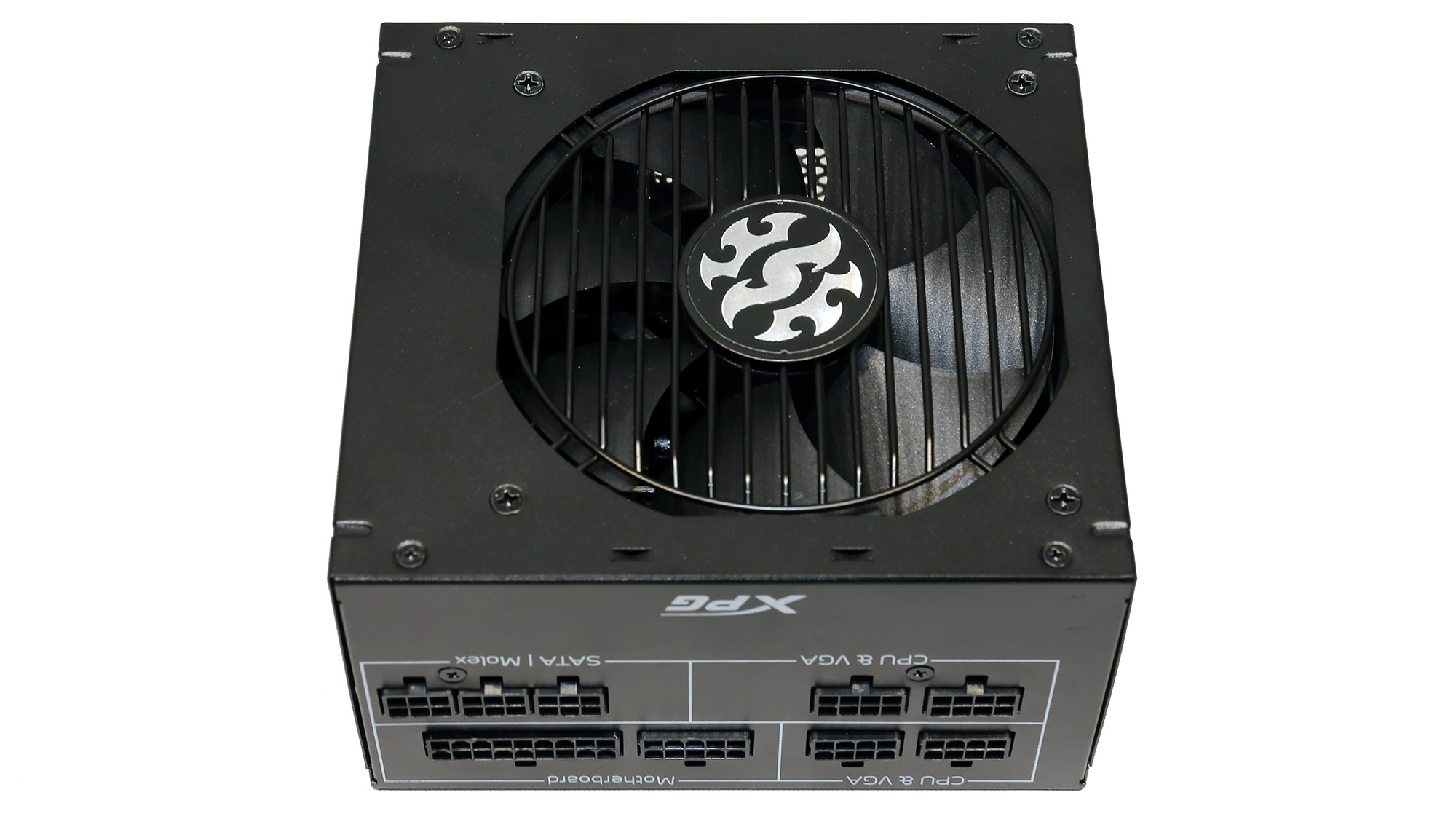

Like the other models in this line, this PSU is super-compact. The power density might not be as high, because of the lower capacity, but still, 140 mm depth will help you the most during installation and cable management. The fully modular cables are a strong asset and the two EPS connectors make this PSU compatible with all high-end mainboards and CPUs. There is a downfall here, though, and we will explain it in the cable description section. Finally, besides 80 Plus Gold the XPG Core Reactor 650 is also certified by Cybenetics, earning ETA-A and LAMBDA-A ratings for efficiency and noise, respectively.

Product Photos


Specifications
|
Manufacturer (OEM) |
CWT |
|
Max. DC Output |
650W |
|
Efficiency | 80 PLUS Gold, ETA-A (88-91%) |
|
Noise | LAMBDA-A (20-25 dB[A]) |
|
Modular |
✓ (Fully) |
|
Intel C6/C7 Power State Support |
✓ |
|
Operating Temperature (Continuous Full Load) |
0 - 50°C |
|
Over Voltage Protection |
✓ |
|
Under Voltage Protection |
✓ |
|
Over Power Protection |
✓ |
|
Over Current (+12V) Protection |
✓ |
|
Over Temperature Protection |
✓ |
|
Short Circuit Protection |
✓ |
|
Surge Protection |
✓ |
|
Inrush Current Protection |
✓ |
|
Fan Failure Protection |
✗ |
|
No Load Operation |
✓ |
|
Cooling |
120mm Fluid Dynamic Bearing Fan (HA1225H12F-Z) |
|
Semi-Passive Operation |
✗ |
|
Dimensions (W x H x D) | 150 x 85 x 140mm |
|
Weight | 1.3 kg (2.87 lb) |
|
Form Factor | ATX12V v2.52, EPS 2.92 |
|
Warranty | 10 Years |
Power Specifications
| Rail | 3.3V | 5V | 12V | 5VSB | -12V | |
|---|---|---|---|---|---|---|
| Max. Power | Amps | 20 | 20 | 54.1 | 3 | 0.3 |
| Watts | 110 | 650 | 15 | 3.6 | ||
| Total Max. Power (W) | 650 |
Cables and Connectors
| Modular Cables | Cable Count | Connector Count (Total) | Gauge | In Cable Capacitors |
|---|---|---|---|---|
| ATX connector 20+4 pin (650mm) | 1 | 1 | 16-20AWG | No |
| 8-pin EPS12V (650mm) / 4+4 pin EPS12V (+150mm) | 1 | 2 | 16-18AWG | No |
| 6+2 pin PCIe (650mm+150mm) | 2 | 4 | 16-18AWG | No |
| SATA (500mm+145mm+145mm+145mm) | 3 | 12 | 18AWG | No |
| 4-pin Molex (500mm+150mm+150mm+150mm) | 1 | 4 | 18AWG | No |
The PSU has an impressive number of cables and connectors, given its capacity, but it is not wise to use two EPS connectors on the same cable. They used, at least, thicker than the standard gauges, but still, a pair of EPS connectors can draw more than 500W of power, and this will result in the failure of the 8-pin connector on the PSU's side. Not many CPUs can draw so much power, but from the moment there are no multiple +12V rails, this is a scenario that can happen. Two PCIe connectors with two EPS connectors on dedicated cables would be a better choice.
Cable length is satisfactory, given that both EPS are on the same cable, so making it even longer would be a problem for load regulation. If the EPS connectors were on dedicated cables, 750mm of length would be highly preferred, though, to maintain compatibility with the majority of ATX chassis. Finally, the distance between the peripheral connectors is ideal at 145-150mm.

Cable Photos





Component Analysis
We strongly encourage you to have a look at our PSUs 101 article, which provides valuable information about PSUs and their operation, allowing you to better understand the components we're about to discuss.
| General Information | - |
| Manufacturer (OEM) | CWT |
| PCB Type | Double Sided |
| Primary Side | - |
| Transient Filter | 4x Y caps, 2x X caps, 2x CM chokes, 1x MOV |
| Inrush Protection | NTC Thermistor & Relay |
| Bridge Rectifier(s) | 1x GBU1006 (600V, 10A @ 100°C) |
| APFC MOSFETs | 2x Infineon IPA60R190P6 (600V, 12.7A @ 100°C, Rds(on): 0.190Ohm) &1x SPN5003 FET (for reduced no-load consumption) |
| APFC Boost Diode | 1x CREE C3D06060A (600V, 6A @ 154°C) |
| Hold-up Cap(s) | 1x Nippon Chemi-Con (420V, 470uF, 2,000h @ 105°C, KMQ) |
| Main Switchers | 2x Infineon IPA60R190P6 (600V, 12.7A @ 100°C, Rds(on): 0.190Ohm) |
| APFC Controller | Champion CM6500UNX |
| Resonant Controller | Champion CU6901V |
| Topology | Primary side: APFC, Half-Bridge & LLC converter Secondary side: Synchronous Rectification & DC-DC converters |
| Secondary Side | - |
| +12V MOSFETs | 4x International Rectifier IRFH7004PBF (40V, 164A @ 100°C, Rds(on): 1.4mOhm) |
| 5V & 3.3V | DC-DC Converters:2x UBIQ QM3054M6 (30V, 61A @ 100°C, 4.8mOhm) & 2x UBIQ QN3107M6N (30V, 70A @ 100°C, Rds(on): 2.6mOhm) PWM Controllers: ANPEC APW7159C |
| Filtering Capacitors | Electrolytic: 8x Nippon Chemi-Con (4-10,000h @ 105°C, KY), 2x Nippon Chemi-Con (105°C, W), 1x Nippon Chemi-Con (1-5,000h @ 105°C, KZE), 1x Rubycon (4-10,000h @ 105°C, YXJ) Polymer: 24x FPCAP |
| Supervisor IC | Weltrend WT7502 (OVP, UVP, PG, SCP) |
| Fan Model | Hong Hua HA1225H12F-Z (120mm, 12V, 0.58A, Fluid Dynamic Bearing Fan) |
| 5VSB Circuit | - |
| Rectifier | 1x Galaxy Microelectronics D10PS45L SBR (45V, 10A) & InPower Semiconductor ISD04N65A (650V, 4A, Rds(on): 2.5Ohm) |
| Standby PWM Controller | On-Bright OB5282CP |

Overall Photos



Channel Well Technology provides the platform (CWT), and its build quality is high. Most of the electrolytic capacitors are from Chemi-Con and Rubycon, with lots of polymer caps. The FETs are by Infineon, one of the best manufacturers in this field, and Champion and Anpec provide the controllers. The small PCB has small heatsinks, and there is enough space between its components for proper airflow.
Get Tom's Hardware's best news and in-depth reviews, straight to your inbox.
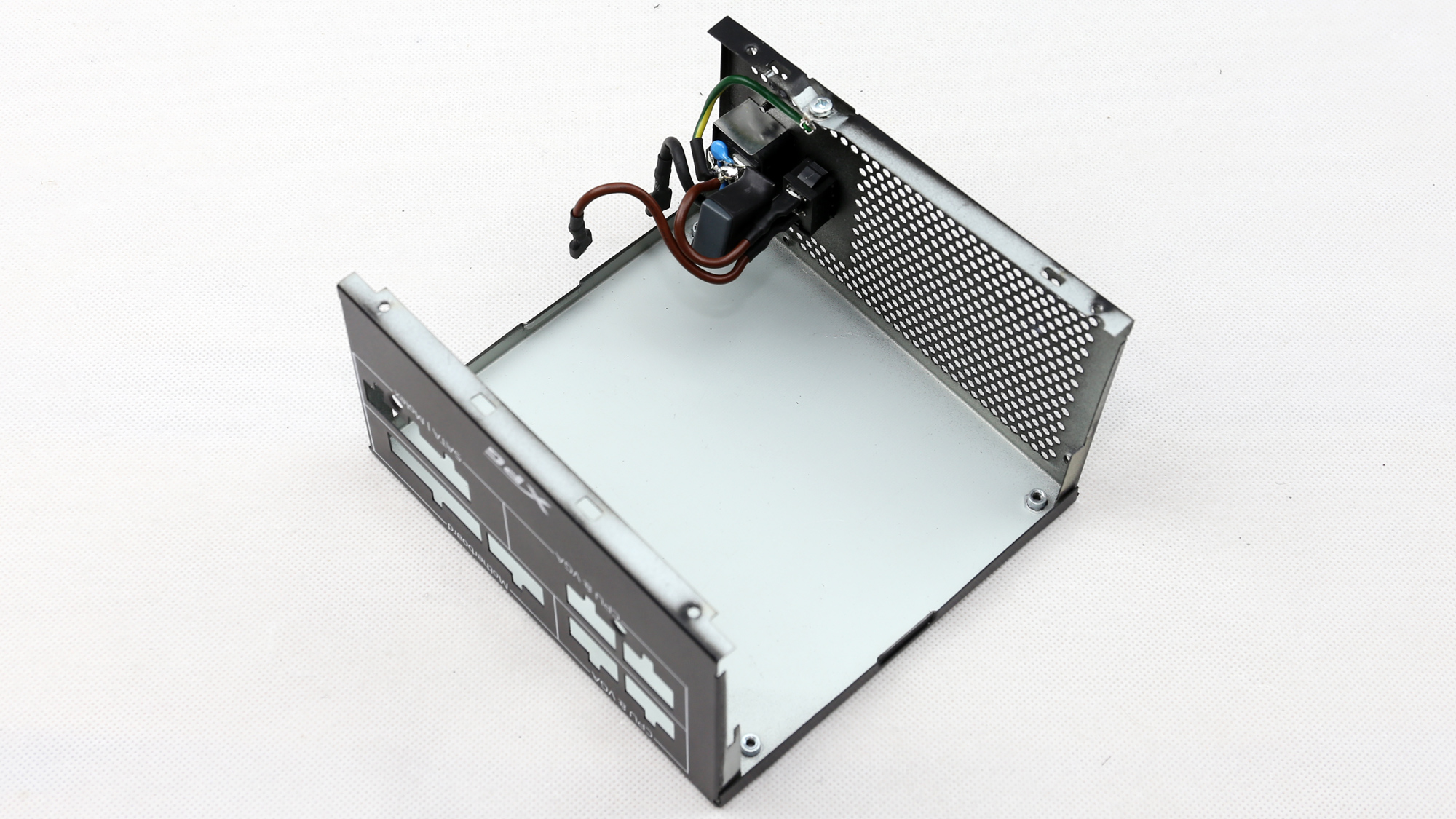
Transient filter




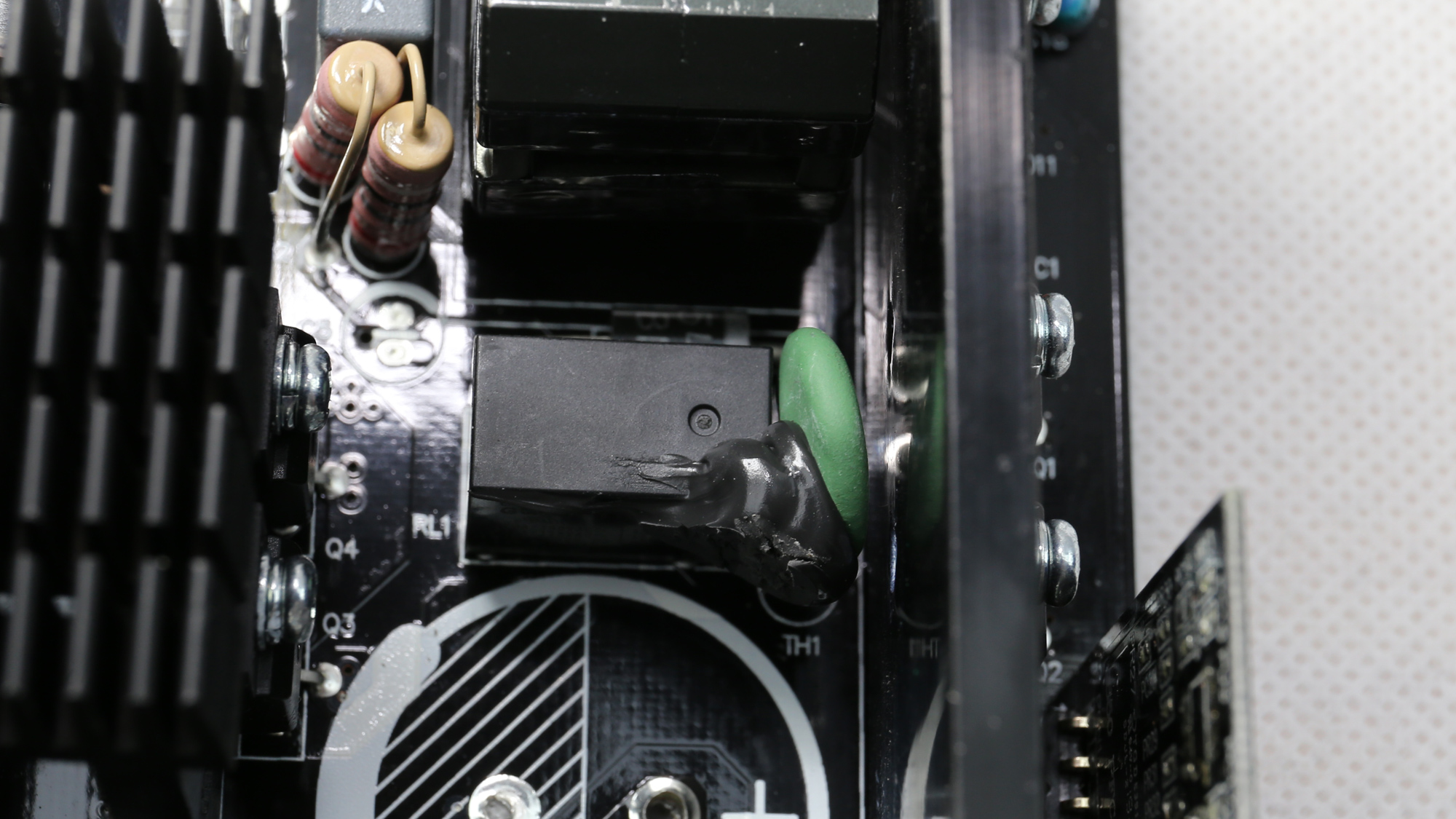
The transient filter has all of the components required to suppress both incoming and outgoing EMI emissions.

We had to remove the single bridge rectifier's heat sink to identify it.

APFC converter

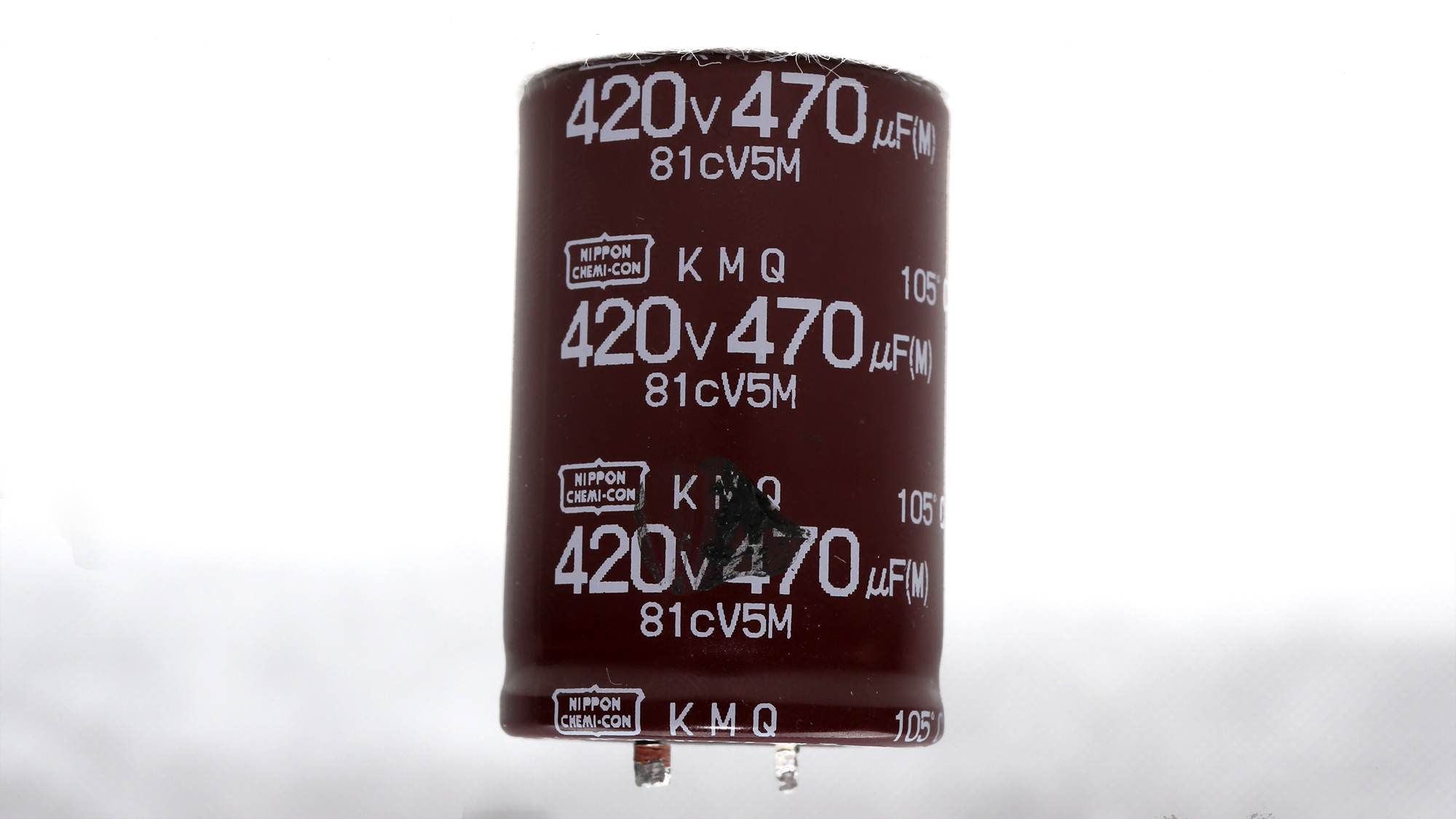


The APFC converter uses two Infineon FETs and a single CREE boost diode. The bulk cap is by Chemi-Con, and although it doesn't have so high capacity, for a 650W unit, still the CU6901V resonant controller allows for a higher than 20ms hold-up time.
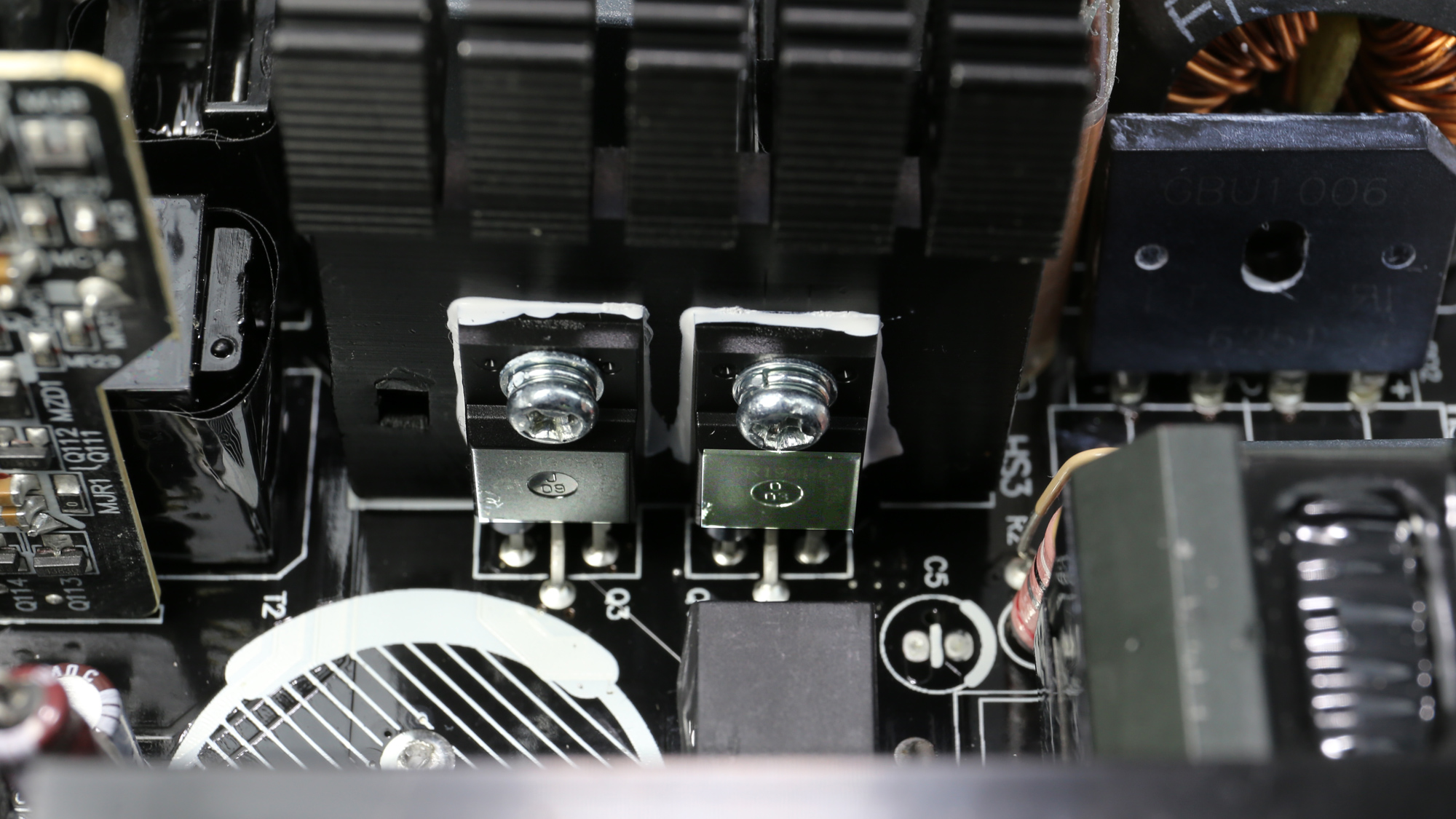
Main FETs and primary transformer



Two Infineon IPA60R190P6, arranged in a half-bridge topology, are the main switching FETs.

12V FETs and VRMs
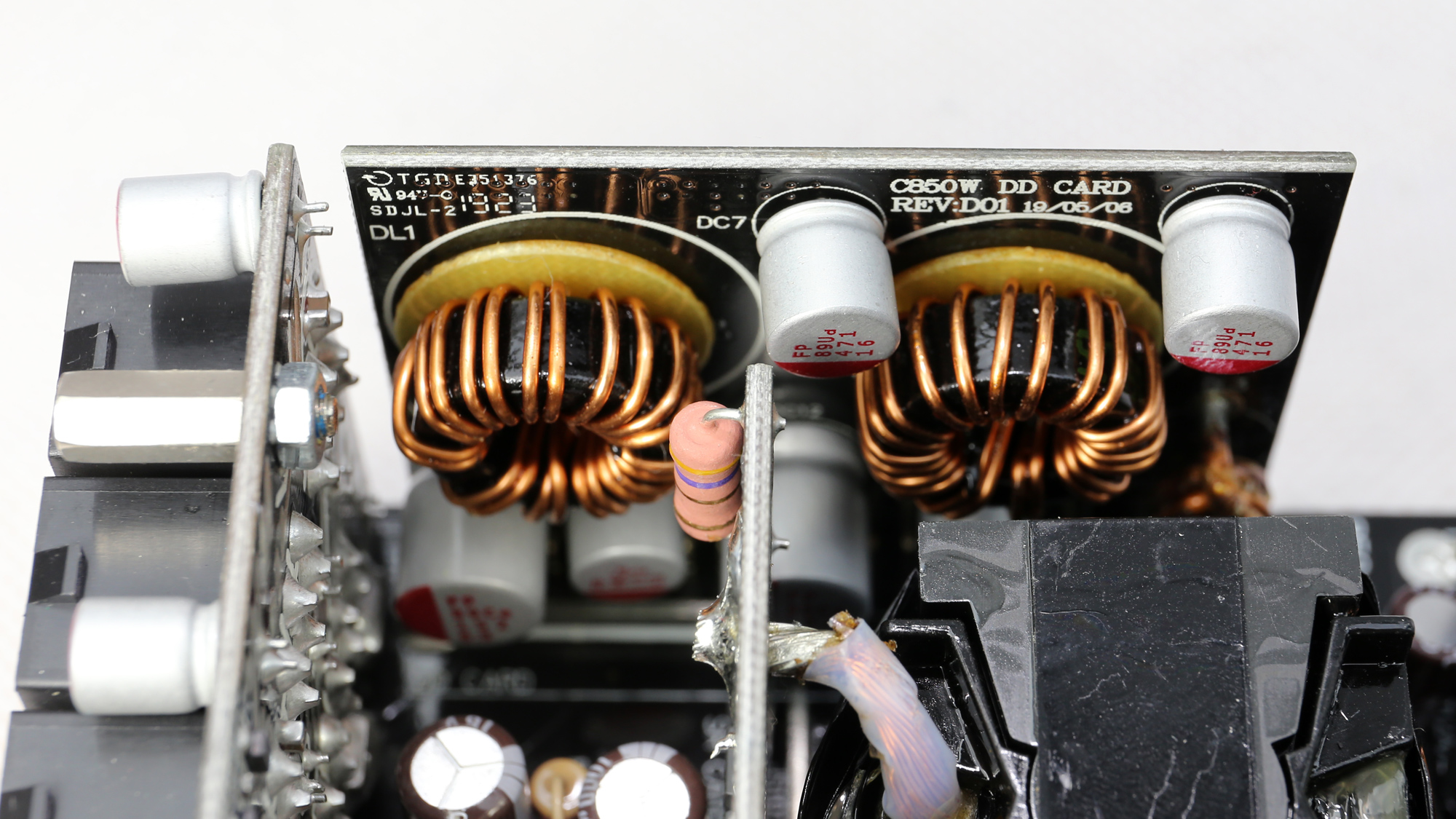

The +12V rail is regulated by four International Rectifier FETs, which are installed on a vertical daughter-board that is close to the main transformer. This way, energy losses are minimized, and the efficiency gets a boost.
The VRMs that handle the minor rails are installed on another board, and the common PWM controller is an Anpec APW7159C.
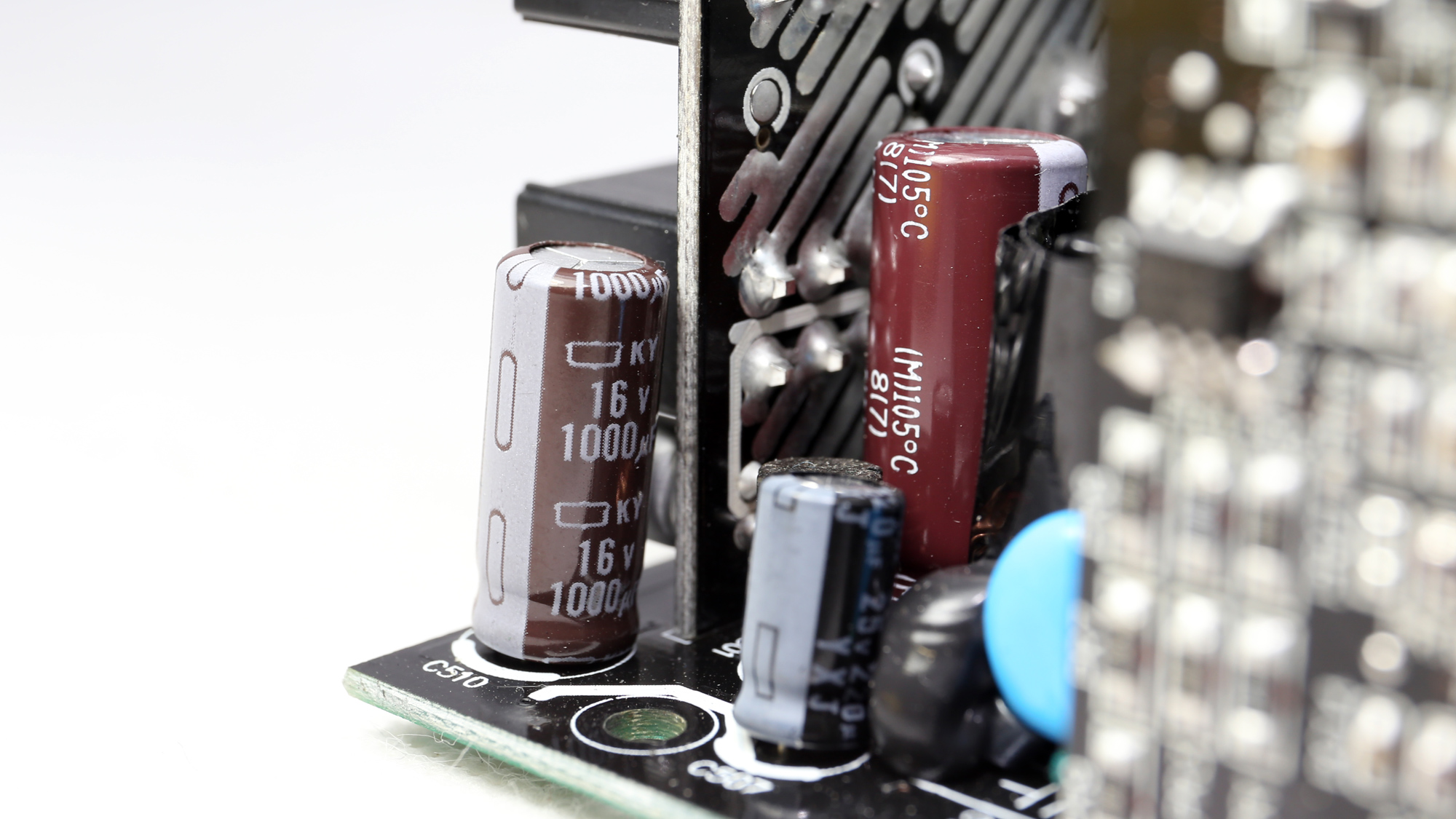
Filtering caps


Most of the electrolytic caps come from Chemi-Cons and Rubycon's good lines. Besides electrolytics, a great number of polymer caps are used for ripple filtering purposes.

Modular board front


At the face of the modular board we find many polymer caps along with several bus bars, which handle power transfers.

5VSB circuit

The 5VSB circuit uses an InPower Semiconductor ISD04N65A FET on the primary side and a Galaxy Microelectronics D10PS45L SBR on its secondary side. The PWM controller is an On-Bright OB5282CP.

A Weltrend WT7502 is the supervisor IC. It supports basic protection features. The over temperature protection is implemented through another circuit.

Soldering quality

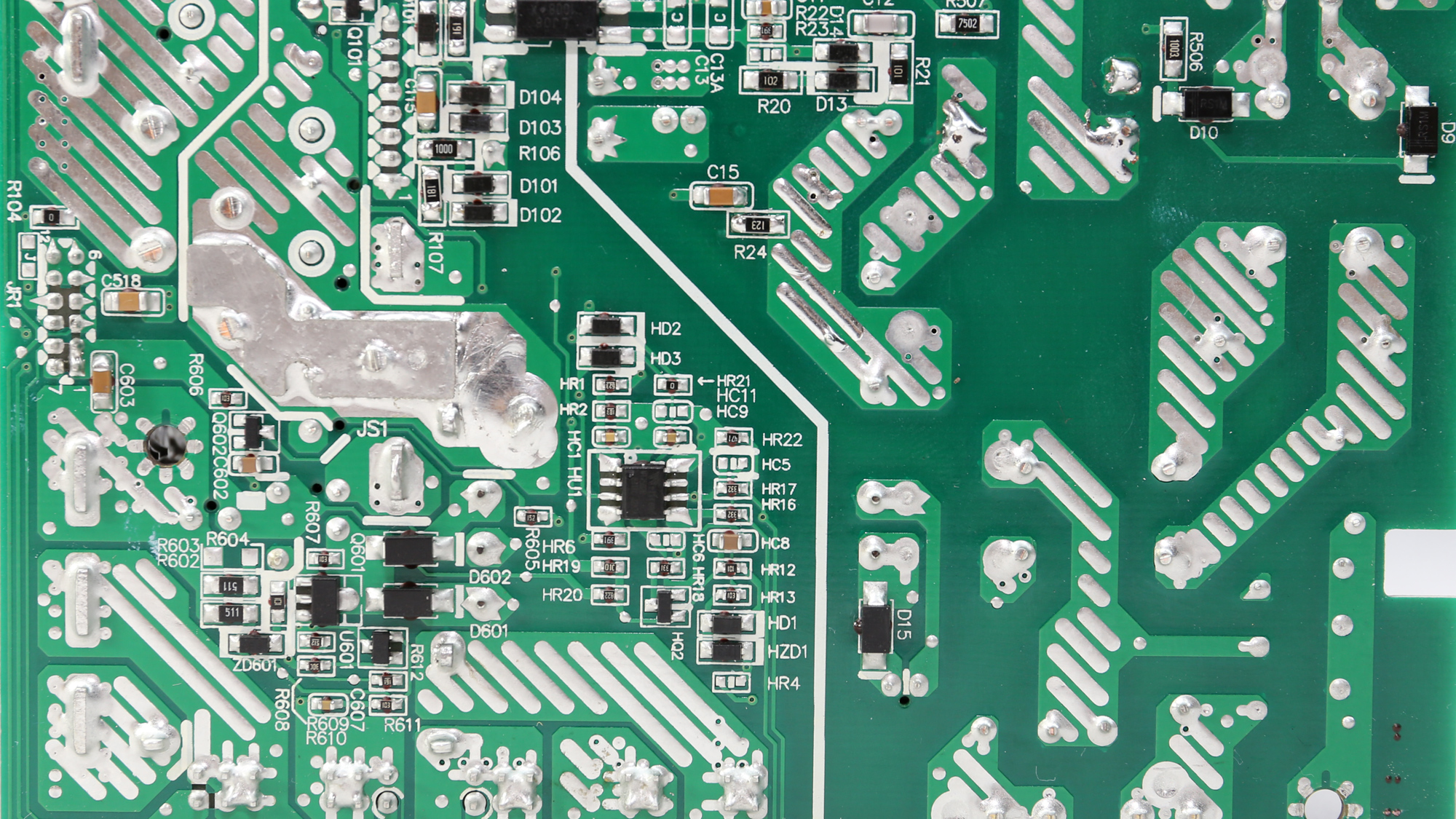



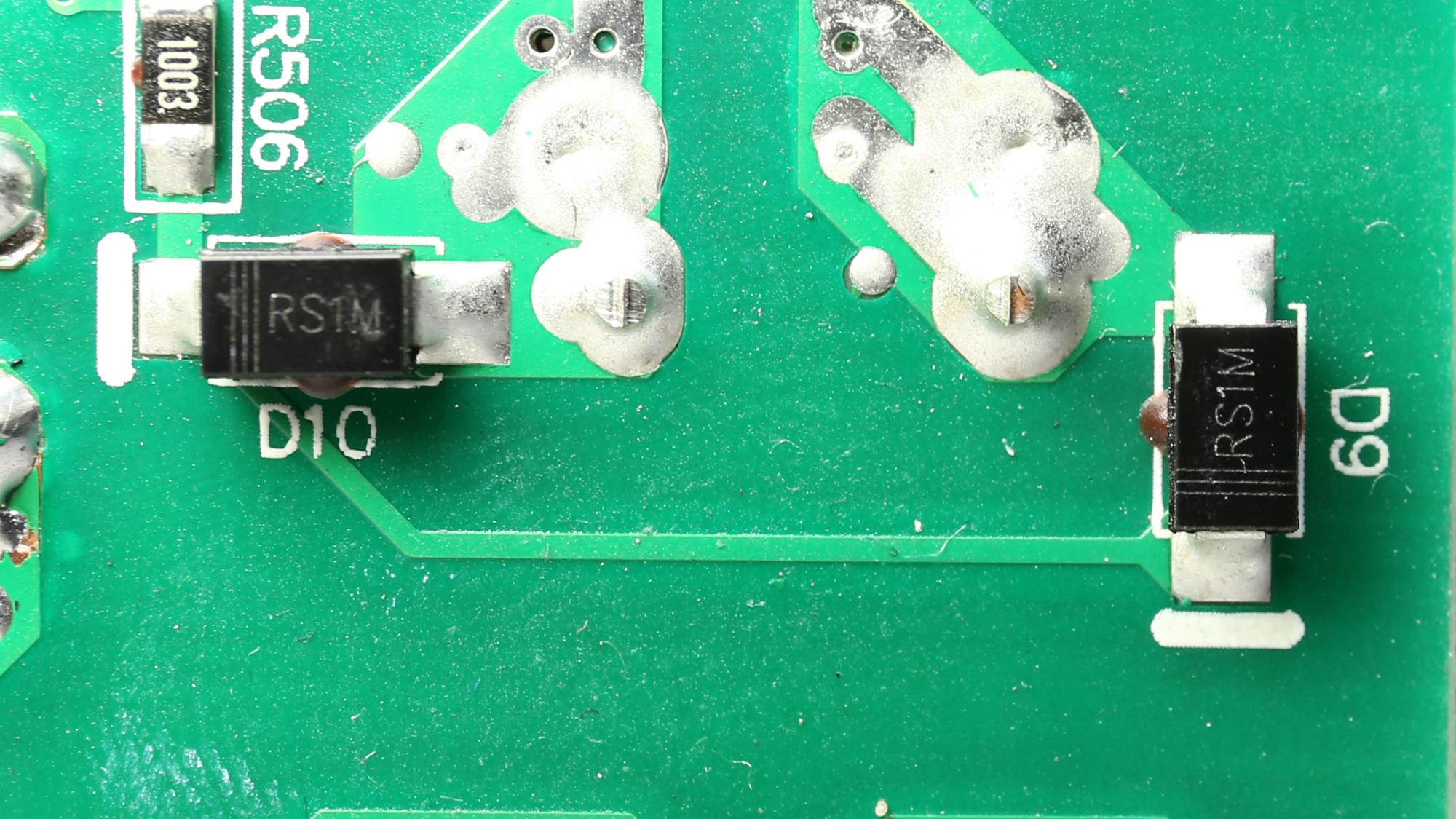
The soldering quality is good, and we didn't notice any issues with component leads.

Cooling fan

Hong Hua provides the cooling fan, and its model number is HA1225H12F-Z. It uses a fluid dynamic bearing, and it measures 120 mm across. It would be nice to see a 135 mm or 140 mm fan for even quieter operation, but the PSU's dimensions didn't allow it.
Current page: Specifications and Part Analysis
Next Page Load Regulation, Hold-Up Time, Inrush Current, Efficiency and Noise
Aris Mpitziopoulos is a contributing editor at Tom's Hardware, covering PSUs.